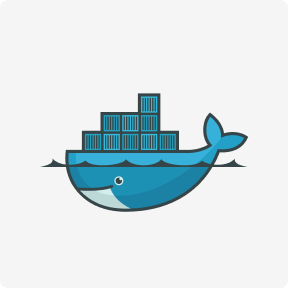The client was a key player in HR consulting, with more than 10,000 employees. The company turned to Exadel to develop a scalable time-tracking application to log employee working hours. The previous version was cumbersome and not sufficiently intuitive or user-friendly. Early implementation of AI isn’t necessarily a perfect science and might need to be experimental at first — beginning with a hypothesis, followed by testing and measuring results.
Results of a recent survey indicate that artificial intelligence can assist businesses in areas ranging from customer support to personalization. Chief executives of high-achieving organizations typically serve as the AI communicator-in-chief. According to our survey data, those organizations that communicate a clear vision are 1.5 times as likely to achieve desired outcomes compared to those who do not. The most effective leaders tend to use their platform not only to communicate and champion their plans; they also clarify the implications and trade-offs required along the way. Let’s see how businesses can add value from AI by looking at an Exadel case study. This real-life example shows how adopting AI solutions automated manual work, enabling employees to free up time and concentrate on more critical tasks.
Using AI in Business: Examples of Artificial Intelligence Application in Business
We take a look beyond the top-level numbers to explore the underlying drivers of success. To ensure that AI technology functions as anticipated, we need a skilled workforce to manage it. Until businesses can upskill their workforce to meet AI-focused challenges, we will likely see some stagnation in AI adoption.

AI projects typically take anywhere from three to 36 months depending on the scope and complexity of the use case. Often, business decision makers underestimate the time it takes to do “data prep” before a data science engineer or analyst
can build an AI algorithm. There are certain open source tools and libraries as well as machine learning automation software that can help accelerate this cycle. SEM Rush reports that AI is expected to create significant business value and enhance worker capabilities. In the race to scale AI and realize more business value through predictive technology, leaders are always looking for ways to get ahead of the pack.
Tools: Pick tools that support creativity, speed, and safety.
These models of AI are customizable to a business as long as you find the right product or service company in the market. AI continuously proves to be an asset for businesses and has been revolutionizing machine learning implementation in business the way they operate. It goes a long way in helping to cut operational costs, automate and simplify business processes, improve customer communications and secure customer data.

Although AI as an area within computer science dates back to the 1950’s, it’s only been within the past decade that many types of AI have become available to companies of all sizes. Then, prioritize that list based on a mix of estimated costs, time to implement, risk/benefit, and overall value. And, of course, you could always read a book or two – although, by definition, that advice will be at least six to twelve months out of date.
Do I understand the legal, privacy, compliance, security implications of building AI solutions at this company?
When determining whether your company should implement an artificial intelligence (AI) project, decision makers within an organization will need to factor in a number of considerations. Use the questions below to get the process started and help determine
if AI is right for your organization right now. This is often essential for maintaining focus and ensuring that decisions made at all levels of the organization remain aligned to the vision. Leaders should also remember that value can be created by influencing perceptions of the market and investors. Communicating the company’s vision publicly can amplify success, signaling to capital markets and the competitive talent market that an organization is investing in a bold and exciting future.
- The leaders also all acquire data from customers and suppliers, and 89% share their own data back.
- An introductory AI course such as Wharton Online’s Artificial Intelligence for Business program can be a great jumping-off point for anyone wanting to learn more about how AI is transforming the world of business.
- When she’s not trying out the latest tech or travel blogging with her family, you can find her curling up with a good novel.
- To standardize, organizations should collaboratively define a “recommended” process for AI development and operationalization, and provide tools to support the adoption of that process.
- People responsible for AI implementation in your company should have different functions and be capable of efficiently managing the processes they’re responsible for.
- Companies whose strategies rely on a few big decisions with limited data would get less from AI.
- Any company with ambitions to gain from advanced digital technologies has the opportunity learn from best practice approaches, whether it is a planner, an executor, or an emerging company today.
Early ideas will likely be flawed, so an exploratory approach to deploying AI that’s taken incrementally is likely to produce better results than a big bang approach. Email us at
How Businesses Are Using Artificial Intelligence
In addition, you should also ensure it meets the needs of your organization. It’s important to remember that using AI is about far more than just keeping track of data and spitting out analytical reports when you need them.

Several bias-detection and debiasing techniques exist in the open source domain. Also, vendor products have capabilities to help you detect biases in your data and AI models. Data often resides in multiple silos within an organization in multiple structured (i.e., sales, CRM, ERP, HRM, marketing, finance, etc.) or unstructured (i.e., email, text messages, voice messages, videos, etc.) platforms. Depending on the size and scope
of your project, you may need to access multiple data sources simultaneously within the organization while taking data governance and data privacy into consideration. Additionally, you may need to tap into new, external data sources (such as data
in the public domain). Expanding your data universe and making it accessible to your practitioners will be key in building robust artificial intelligence (AI) models.
How to Kickstart Your Content Journey with WriterAccess’s 14-Day Free Trial
Enterprises can employ AI for everything from mining social data to driving engagement in customer relationship management (CRM) to optimizing logistics and efficiency when it comes to tracking and managing assets. AI continues to develop actively and requires human interference on a decreasing scale. By automating and revamping your business processes with AI, you lay the foundation stone of the future well-being of your company. Seek to embrace the transformative power of AI, remember that a custom AI solution is only as good as the data used to create one. Carlo Torniai, Head of Data Science and Analytics at Pirelli, says that many challenges arise from data quality and availability, clear and measurable KPIs, and resistance to change.

At the same time, computing trends like big data, IoT, self-driving vehicles, and speech and image recognition are generating more “targets” to point AI tools at. Whichever approach seems best, it’s always worth researching existing solutions before taking the plunge with development. https://www.globalcloudteam.com/ If you find a product that serves your needs, then the most cost-effective approach is likely a direct integration. For example, you may implement such AI solutions for pre-screening candidates or creating a chatbot to answer common questions while onboarding.
Watch: What is ChatGPT, and should we be afraid of AI chatbots?
AI models must be built upon representative data sets that have been properly labeled or annotated for the business case at hand. Attempting to infuse AI into a business model without the proper infrastructure and architecture in place is counterproductive. Training data for AI is most likely available within the enterprise unless the AI models that are being built are general purpose models for speech recognition, natural language understanding and image recognition. If it is the former case, much of
the effort to be done is cleaning and preparing the data for AI model training. In latter, some datasets can be purchased from external vendors or obtaining from open source foundations with proper licensing terms. For example, companies may choose to start with using AI as a chatbot application answering frequently asked customer support questions.
